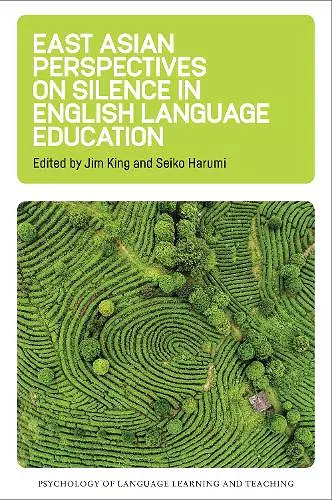East Asian Perspectives on Silence in English Language Education
Jim King editor Seiko Harumi editor
Format:Paperback
Publisher:Multilingual Matters
Published:22nd Jun '20
Should be back in stock very soon
This paperback is available in another edition too:
- Hardback£114.95(9781788926768)

The first edited book in over 20 years to focus on silence in second/foreign language learning
This book provides a state-of-the-art account of current research on the relatively neglected, complex and ambiguous issue of silence within second language settings. The chapters use a range of theoretical approaches and research methodologies to explore silence within a variety of educational contexts connected to East Asia.
Silence is a key pedagogical issue in language education. Seen by some as a space for thinking and reflection during the learning process, for others silence represents a threat, inhibiting target language interaction which is so vital during second language acquisition. This book eschews stereotypes and generalisations about why so many learners from East Asia seem either reluctant or unable to speak in English by providing a state-of-the art account of current research into the complex and ambiguous issue of silence in language education. The innovative research included in this volume focuses on silence both as a barrier to successful learning and as a resource that may in some cases facilitate language acquisition. The book offers a fresh perspective on ways to facilitate classroom interaction while also embracing silence and it touches on key pedagogical concepts such as teacher cognition, the role of task features, classroom interactional approaches, pedagogical intervention and socialisation, willingness to communicate, as well as psychological and sociocultural factors. Each of the book’s chapters include self-reflection and discussion tasks, as well as annotated bibliographies for further reading.
Although seemingly paradoxical, King and Harumi have much to say about silence. This edited work unlocks the ‘problem’ of silence in East Asian English language classrooms, and shows teachers how to leverage it for better language learning. Educators are certain to find this book to be a valuable resource. * Gregory Hadley, Niigata University, Japan *
As language practitioners and researchers we are behooved to consider the entire communication process – even that which goes beyond words – to include their absence. This volume is a must-read for those of us who care about how much is said when nothing is. * Tammy Gregersen, American University of Sharjah, United Arab Emirates *
This well-informed book uses a healthy variety of research methods to present a multi-layered picture of learner reticence within classroom interaction, and sociocultural and psychological features of learning. It offers highly relevant insights to many school and university classrooms around the world and should be on the reading lists for advanced professional or Masters courses in ELT, applied linguistics, and classroom research methods. * Martin Cortazzi, University of Warwick, UK *
I find two aspects of the volume particularly appealing. The first of course is the thoughtfulness each study put into reconceptualising silence from the perspective of students and teachers. By treating silence as a serious topic for investigation, the contributions have shown that what has been treated only as problematic is actually a complex, nuanced, and potentially malleable confluence of psychological and sociocultural forces. The second is the inclusion of various research methodologies and theoretical approaches. In the spirit of recent calls for transdisciplinarity in the field of Second Language Acquisition (Douglas Fir Group 2016; Duff and Byrnes 2019), the volume recognises that silence is too vast and complex an issue to be adequately addressed by one approach. King and Harumi as well as their contributors are to be applauded for assembling a volume that pushes the fields of TESOL and Applied Linguistics to reconsider classroom silence as a dynamic phenomenon.
-- Stephen Daniel Looney, The Pennsylvania State University, USA * Classroom Discourse, 2020 *This volume adds additional insight to the discussion of silence and willingness to talk especially in L2 classroom by examining the issues from psychological point of view.
-- Bunga Ayu Wulandari, Universitas Jambi, Indonesia * The Asian EFL Journal, Issue 24 Volume 6 *[This book] serves as a good introduction into the study of silence among EFL students from East Asian backgrounds. Beyond the audience explicitly stated in the text, teachers of East Asian languages such as Japanese, Chinese, or Korean will also likely benefit from the expanded understanding the book provides regarding silence in the East Asian context. Teachers less familiar with the field of silence in language learning and teaching may find the authors’ perspectives insightful and will likely lead to a better understanding of how to approach silence in their own teaching.
-- Jeff Peterson, Brigham Young University, USA * LINGUIST List 32.1224 *ISBN: 9781788926751
Dimensions: 234mm x 156mm x 11mm
Weight: 432g
200 pages